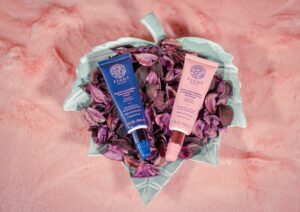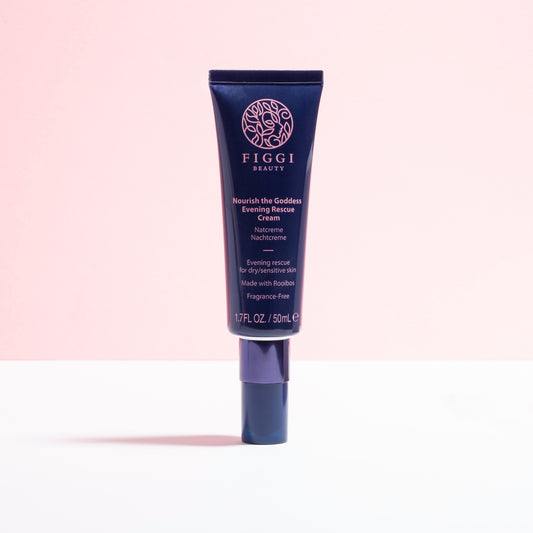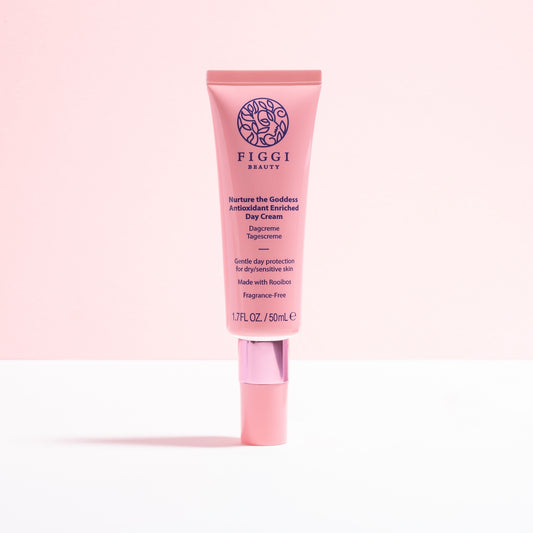Slugging is one of my favorite tricks in my sensitive skincare arsenal. You’ve probably heard of this before since it is often trendy in the drier and colder months. I’ve got you and will explain everything if you need to know what it is.
For the Goddesses that frequent the FIGGI content, you know that I have dry and sensitive skin. My take on slugging, why I do it, and how I do it is obviously based on my skin type. Many skin types can benefit from slugging, but as always, I recommend that you speak to your medical aesthetician or derm to ensure this is the right approach for you.

As with all things skincare, many things can affect the outcome of your slug, and it’s essential to be well informed of all these possibilities before trying anything new on your skin. Especially if you have been blessed with a sensitive host like me. In short, when in doubt, always consult your derm first.
So let’s jump right into it.
What is slugging?
Really simply put, it’s a great way of ensuring all the beautiful moisture and goodness in your skin stays in the skin and penetrates deeply. We apply moisturizers to restore lost oils and water that evaporates from the skin through transepidermal water loss or TEWL.
Your moisturizing routine depends on your skin type and whether you are dealing with dryness or dehydration. For the former, you will need a moisturizer that restores oil to the skin. You may use a water-based moisturizer to attract water to the skin for the latter. If your skin is like mine, dry and dehydrated, your moisturizer must address both oil and moisture loss.
When we apply our moisturizer, we hope it will penetrate deeply, keep all the oils and water inside the skin (perhaps even attract more water), and prevent any further moisture loss. However, our skin can sometimes benefit from a boost or extra help. This often happens in colder months when dry skin seems even more parched or when your skin is more dehydrated than usual. You are probably familiar with a damaged or broken skin barrier if you have sensitive skin. That is often the cause of your stinging, burning, and itching sensations on the skin. The pronounced redness and inflammation you may see on the skin.
Enter Slugging. Put a layer of thick occlusive on top of your moisturizer and go to bed looking like an oil pot. This helps seal the goodness of your moisturizer, boosting its superpowers a little so its work can be more effective.
How to slug?
Slugging is an additional occlusive layer on top of your evening moisturizer. It’s not a host of different products or multiple other steps in your routine. The most challenging part is choosing which occlusive you will use.
Occlusives are those ingredients in skincare products that form a film over the skin, keeping all the goodies in and the baddies out. Good moisturizers for sensitive and dry skin should provide this protection. However, as noted above, you sometimes need a little extra help. When dealing with a compromised skin barrier, drier months of the year, excessive flaking, and more pronounced dryness.
There are three favorites to use for purposes of slugging. Good ole’ Vaseline, Aquaphor, and Cerave Healing Ointment. I use Vaseline as this is the true unsung hero of my skincare routine. I will write an entire post on how petrolatum is not the devil the skincare conversation makes it out to be, but let’s leave that battle for another day.
I prefer Vaseline because it’s tried and true, inexpensive, easy to get hold of, and its works! More importantly, its fragrance and essential oil-free. A huge consideration in my sensitive skincare routine. Just note that you must buy the original pure skin jelly. There are new derivatives with fragrances. Huge side note here: Vaseline is not comedogenic. It will not clog your pores. The molecules are way too big to penetrate into pores. More on what does clog pores below 
I use something other than Aquaphor because it’s expensive to buy in Europe and difficult to find. Also, it has lanolin alcohol, which I do not react well to, and often can cause some slight irritation for those sensitive to it. I usually love Cerave and have nothing against the healing ointment. Cerave is expensive in Europe, and not all pharmacies stock the healing ointment, so finding it can be a challenge. Also, when slugging, I like to keep things simple with the occlusive, hence pure petrolatum in Vaseline. I also use the FIGGI Beauty Evening Rescue Cream underneath my slug, which provides me with green rooibos extract, ceramides, panthenol, and other beauties for my dry skin.
Once you’ve chosen your slugger, you’re ready to go. Cleanse, moisturize, and apply a layer of your slug. Keep your hair out of your face and sleep with an old pillowcase because there will be stickiness everywhere.
Make sure to wash off the slug the following day. I only cleanse with water in the mornings. I use a lukewarm microfiber cloth to gently wipe away the Vaseline layer in the mornings and continue my daily routine.
Slug warnings!
Never ever Slug on dirty skin. Read our post on double cleansing and how to cleanse properly. Remember, you are sealing in everything on your skin overnight. If you seal in old dirt, oil, and bacteria, it will lead to breakouts and all sorts of other issues.
As I said above, Vaseline does not clog pores and cause breakouts. What does cause breakouts is applying a thick layer of Vaseline over dirty skin and leaving it to stew in its own bacteria overnight. Gross picture, but you understand the message here.
Don’t slug over active or cystic acne. Talk to your dermatologist to work out the best treatment plan for you. Your derm will also be able to advise if slugging is the best option for you and, if it is, how and when to use the slugging method.
Sealing in anti-aging or brightening products overnight with a Slug is dangerous and not to be attempted without the guidance of a dermatologist, especially for sensitive skin. Actives that work to address specific concerns like dark spots, uneven skin tone, and wrinkles are already potent. Some skin types, like mine, find many of these actives too strong and cannot tolerate them in the high percentages many products contain.
“Slugging-in” these super powerful ingredients can cause burning, breakouts, damage to your skin barrier, and many other issues ranging from mild to serious and severe. I never slug over actives and am cautious with the moisturizers I apply before slugging.
How often to slug?
Depending on your skin type, you can slug from once a week to every night. You need to be in tune with what your skin needs. My skin is dehydrated and sensitive. Due to a relapse in panic attacks and a stressful travel schedule, I recently dealt with a broken skin barrier. To assist in repair and relief from the symptoms of a damaged skin barrier, I slugged every night for two weeks. When my skin is in good condition, I slug 2-4 times a week in the Winter and 1-3 times a week in the Summer. It depends on how dry my skin is and how it feels and looks.
If you have super oily skin prone to breakouts, you may not need help locking those in with extra oils. However, you may be dehydrated and can benefit from locking in extra moisture at night. Just remember to be super careful over active acne.
The takeaway
Slugging is a great way of looking after your skin, boosting the properties and abilities of your skincare products, and creating that extra glow. If practiced correctly and responsibly, it can be a game changer for your skin.
Have you slugged? How do you do it, and what are your favorite products?




